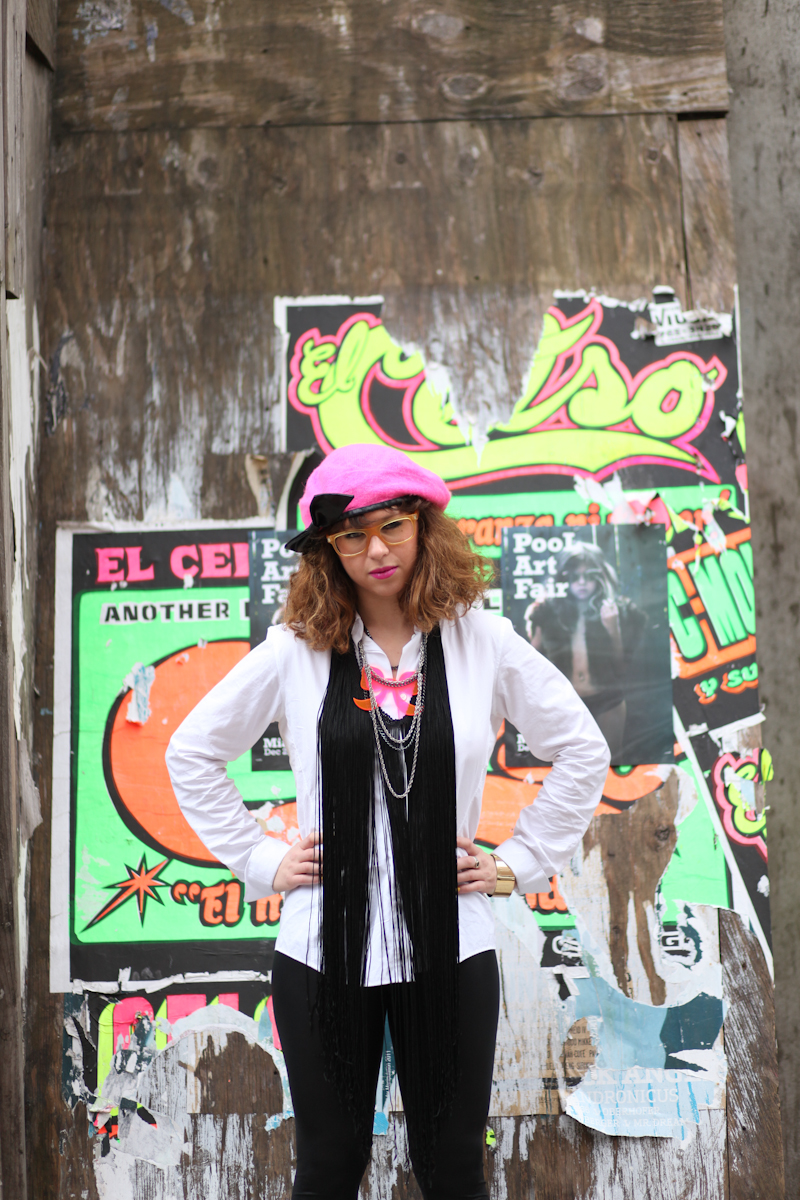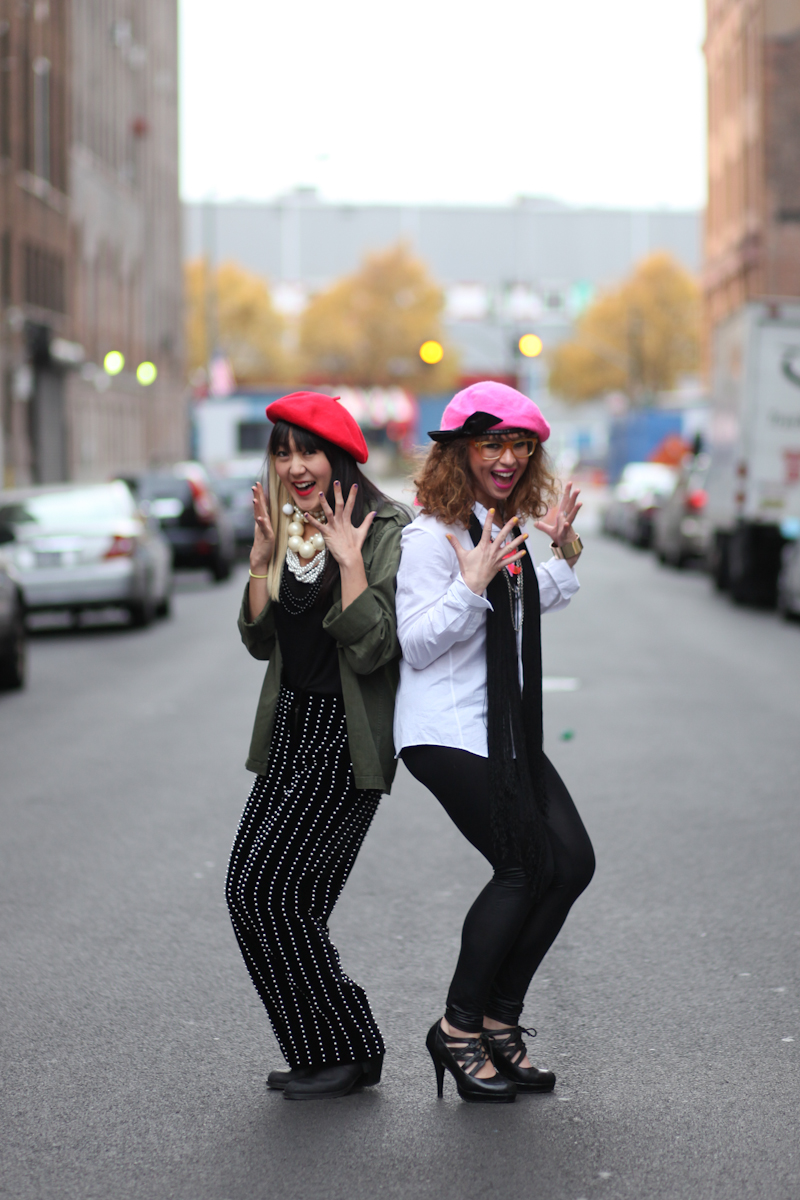The Curatorial Vision: Editor-in-Chief Anna Mikaela Ekstrand Reflects on Her Path Into Art

 Equal parts entrepreneur and academic, Anna Mikaela Ekstrand has through her editorial work pushed the boundaries of arts media in the digital sphere. From the time she booked all her friends in the tanning bed as teen, she has been an aggressive and passionate impresario. She has come a long way since then, encompassing a spirit of feminist collaboration and always keeping an eye towards the future. Now for the first time, to promote the launch of Cultbytes Curatorial & PR/Digital Agency, our editor-in-chief took the time for a rare interview with our editor-at-large to open up about her experiences and goals.
Equal parts entrepreneur and academic, Anna Mikaela Ekstrand has through her editorial work pushed the boundaries of arts media in the digital sphere. From the time she booked all her friends in the tanning bed as teen, she has been an aggressive and passionate impresario. She has come a long way since then, encompassing a spirit of feminist collaboration and always keeping an eye towards the future. Now for the first time, to promote the launch of Cultbytes Curatorial & PR/Digital Agency, our editor-in-chief took the time for a rare interview with our editor-at-large to open up about her experiences and goals.
 Above: Gina Im and Anna Mikaela Ekstrand. Previous: Anna Mikaela Ekstrand. Photographed by Jimmy Pham.
Above: Gina Im and Anna Mikaela Ekstrand. Previous: Anna Mikaela Ekstrand. Photographed by Jimmy Pham.
Alexandra Bregman: Cultbytes is celebrating two years this fall, congratulations. What motivated you to found the media platform?
Anna Mikaela Ekstrand: Basically, I just felt: “I can do this better myself!” Alongside my museum work, I had been working as a freelance writer for some time and felt that I hadn’t always been treated right. At Cultbytes, everyone gets paid and I try to provide my collaborators with the support and mentorship they need to become better at what they do. Currently, we have over 12.5K followers on Instagram, I have published pieces by more than 35 writers, curators, and artists, and our readership is consistently on the rise.
Impressive. What are your aspirations with Cultbytes?
Thanks. It’s been such an exciting journey with invaluable support from my team, including you as our editor-at-large, and our readers! In terms of editorial, I aspire to stay true to our mission to provide our readers with qualitative content and to foster growth for emerging talent. The agency is still in its infancy, so I want to continue to grow the team as we take on new projects. Moving beyond our digital strategy, Social Media Management, and PR projects, I would like to help non-art related entities support artists. My team and I are working to find financially viable solutions through a combination of marketing and branding opportunities to effectively approach companies and nonprofits.
A simple but deceptively complicated question: Where are you from?
You’re right. I’ll just give you the facts and you can decide. I was born in London, I grew up in Stockholm, my mother is Guyanese, and I have three citizenships, including my American one. On my mother’s side, I stem from indentured workers, basically slaves, from China and India that went to Guyana. Therefore, I am vigilant about keeping topics that explore gender and race present in our editorial calendar.
Cultbytes has really fostered a dialogue around diversity and gender. When did you first realize you were a feminist?
I had an advantage growing up in Sweden, a country with a government mandate to promote gender equality. I first read Marquis de Sade’s “Justine” and “The Second Sex” by Simone de Beauvoir in ninth grade. Then I made a short film about a Swedish anthology of feminist texts, “Fittstim,” which, among other things, was against slut shaming. I understood that navigating being woman was about navigating multiplicities, something that I, being a third-culture kid, was trained in. I called myself a feminist and have continued to advocate for women, explore gender theory, and feminism(s) since.
Do you also use your background in your editorial practices?
Yes! Because of my heritage, I am interested in diversity in the arts. To be honest, Cultbytes is a little sexist, as we are an all-female led publication that publishes mostly by female writers. That said, I have worked with great male writers and curators.
How about your curatorial practice?
The first freelance curatorial project “Your Decolonizing Toolkit,” that I co-curated with Cultbytes editor-at-large Ayana Evans featured seven artist (Dominique Duroseau, Shani Ha, Kanene Holder, David Antonio Cruz, Maria Hupfield, Esther Neff, and IV Castellanos) and four performances. It was an attempt to spark conversation about race, identity politics, and sexuality. I also like artists that approach these topics in quirkier ways. I curated the Swedish musician and performance artist Grebnellaw’s first appearances in New York. She has created a species that wear bulbous out-of-this-world costumes that represent disruptive characters beyond gender that aim to spead a message of peace.
Why the art world?
I really like the predictive nature of contemporary art. Art is unadulterated, direct from the source, a manifestation of one person or a small collective’s ideas. I am also an experience junkie, and there are so many varied experiences that the global art world has to offer. Really, understanding and learning about the world is what drew me to studying art and design history. I have two master’s degrees and when I am in Stockholm I work out of the Royal National Library, I love learning and environments that foster it.
Then you got into digital.
In my teens I coded websites using HTML and spent countless hours in chat rooms, but lots of kids did that. More recently, when many of my friends decided to open galleries, Ellie Rines at 56 Henry and Liza Lacroix at MAW, I was running Gallerina Diaries, a blog that I co-founded with Gina Im. I felt that a more robust digital platform [Cultbytes] was the platform that would best allow me to make a bigger contribution to the art world. I have since worked with several arts-tech companies, such as Barnebys and The Marks Project. So, now I am really happy to be driving arts in the digital sphere forward.
How does the digital sphere move the art world forward?
In a moment when the art world is gaining more mainstream popularity, I am interested in creating new ways for art to be digested and disseminated in curatorial projects and through, digital strategy and communications. To this aim, I am involved with advising on strategy with a couple different blockchain and art ventures – Orion Vault, ATO Gallery, and Regestra. I love the novel approaches and innovative mindset of techies and leaders from the financial world that seek to bridge technology and art to innovate our industry.
One of your main strengths is that you are both entrepreneurial and academic. Where do your careers as a writer, editor, and PR manager overlap and diverge?
Thanks. I’m a dogged person, it drives people crazy sometimes that I am constantly seeking new opportunities. Ultimately, this mindset makes me a better PR person and curator. For PR, I am always ahead of the curve and on trend. For curation, I use interplay of media and art historical moments to ensure that my exhibitions are relevant as well as aesthetically avant-garde.
Tell me more about how your difficulties with your eye keep you on your A-game.
I have an autoimmune disease since childhood that has negatively affected my eyesight. It gets me down sometimes, but mostly it propels me to keep on working. As the sight on my left eye deteriorated, I think my curatorial eye sharpened. Sometimes, I think that the intensity with which I live my life is based on the fear of losing my sight.
Now, a routine question, that always stresses me out. What is your routine?
Don’t fret, I will make it short. I roll out of bed, do 100 sit-ups, listen to BBC Global News Podcast and Ekot, eat two eggs, and drink Earl Gray tea; after that, anything can happen.
Who do you most admire?
Maria Lind, director of Tensta Konsthall. I can’t wait to see what Daniel Birnbaum, currently the director of the Moderna Museet in Sweden, will be going to do at VR Acute Art. I saw the shortened version of Rachel MacLean’s film “Make Me Up” (2018) at the Zabludowicz Collection in London last month and absolutely loved it, I look forward to seeing the feature-length film. Who I most admire changes on a daily basis. The only constant is that I am always a supporter of, and fascinated by risk-taking artists, entrepreneurs, and creatives, both contemporary and historical.
What do you think it takes to make it in the art world?
Persistence, talent, and friends. That said working with art in New York is an expensive affair. Institutions require master degrees, at least, and the salaries they pay can hardly cover the costs of living and paying off student debt. Likewise, artists are often not paid for their work with institutions and non-profits. Working Artists and the Greater Economy, are leading this conversation for artists. And, salary surveys like POWarts’s help substantiate discussions on wage. As my generation moves into middle management and management roles, we need to advocate for our colleagues and collaborators to reach a more equitable distribution of funds in the art world economy. Basically, if your boss wants you to take on an unpaid intern, negotiate better remuneration for them. If you’re in the position to have an intern you are in the position to stand up for them also.
How do you go about making these connections?
I think it is important to start conversations with artists, curators, writers, scholars, and other professionals in the art world that you admire in order to fully understand their practice. Then when situations present themselves, you can bring them onto your projects. In turn, they will bring you onto theirs. Make friends with range in mind. I met Nina Blumberg, Cultbytes Social Media Manager, on Instagram. Now, she is an important part of Cultbytes Agency.
Tell me something unexpected about yourself.
I founded my first company, a tanning salon, at 15. I got two machines. It was intense. I opened it at boarding school and tanned, like, the whole school.
Crystal ball time! Where do you see the intersection of art and tech in 10 years?
In 10 years, Cultbytes is running an artist residency program in space. Most people have memberships for VR experiences that allow users to access works from the Louvre’s collection… narrated by Salma Hayek, of course. 3D printed Chinese decorative arts are all the rage, fashion is unisex, and most people have at least one tech-heavy hyper-medieval beaded gown. Silicon Valley is a cloud-based art fair, the Metropolitan Museum has started to pay everyone working in the museum using funds made from revenue-building tech initiatives, and there’s an America’s Got Talent for performance art robots produced by a graduate of Marina Abramovic’s art academy. I can’t wait.
Noted. See you in the future!
Inspired? Cultbytes Agency is open for business. Send all inquiries to info[at]cultbytes.com.
You might also like
Interview: Nina Blumberg, the Non-Stop Instagrammer
Ayana Evans at The Barnes Foundation: The Work of Throwing Hexes
From Ad Woman, Arts Writer, and Crypto-Guru to Artist, Herstory is Made as Alexandra Rebrands
What's Your Reaction?
Editor-at-Large, Cultbytes Alexandra Bregman has written for The Wall Street Journal, Architectural Digest, The Art Newspaper, and the Asian Art Newspaper among others. She began her career with internships at Christie's and Gagosian gallery 10 years ago, later traveling to India and France for work and ghostwriting for a global CEO. Bregman spent time at Université Paris IV-Sorbonne, and completed degrees at Smith College and Columbia Graduate School of Journalism. l igram |


